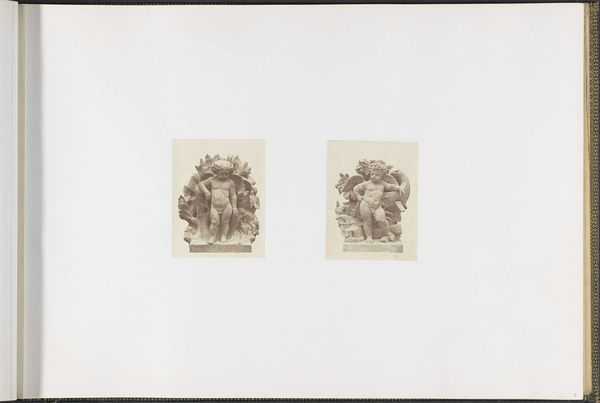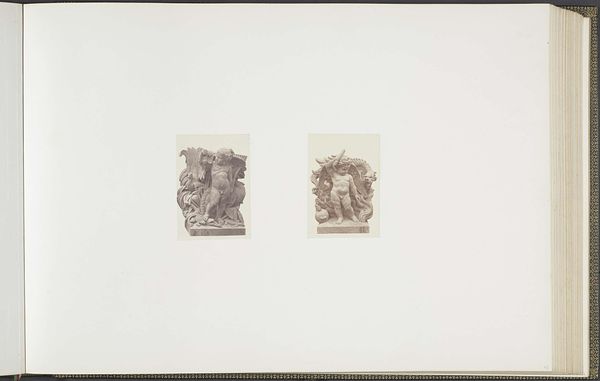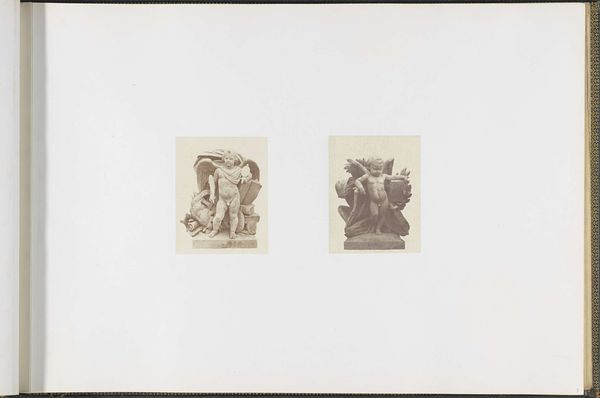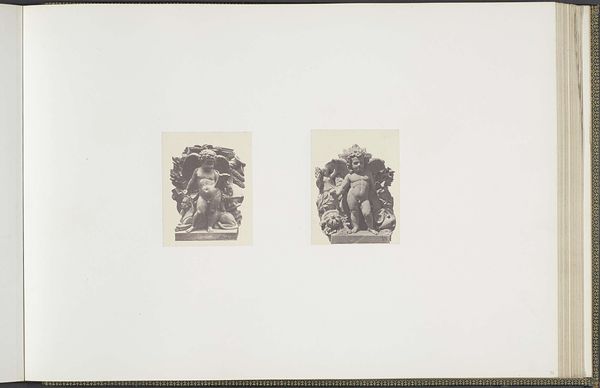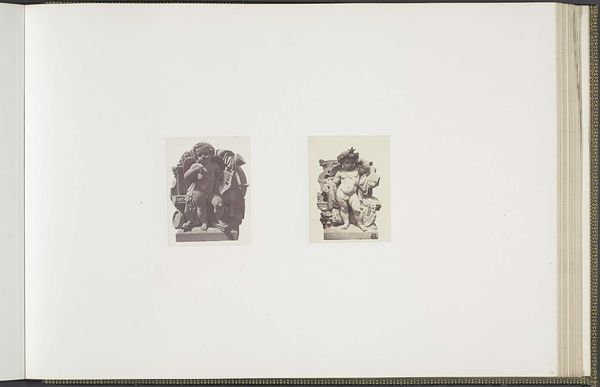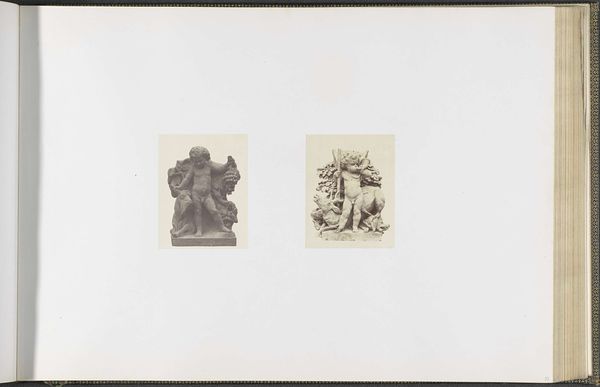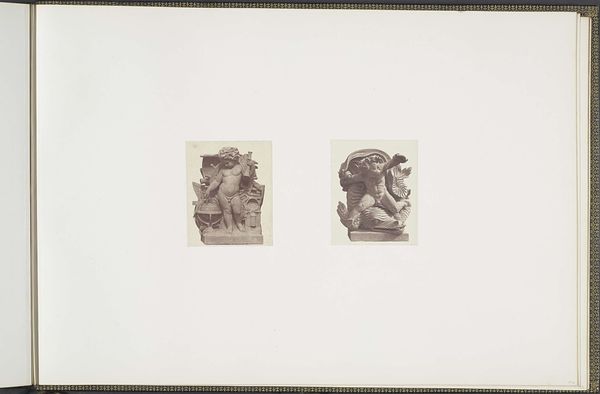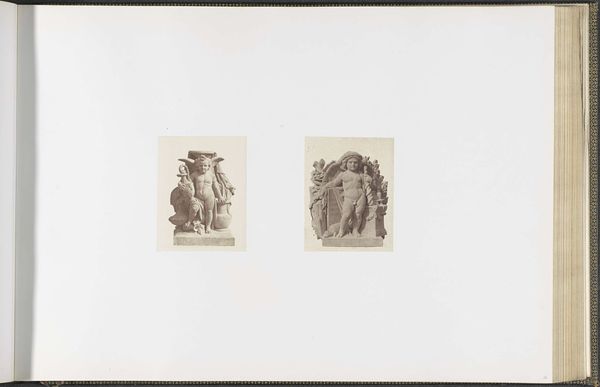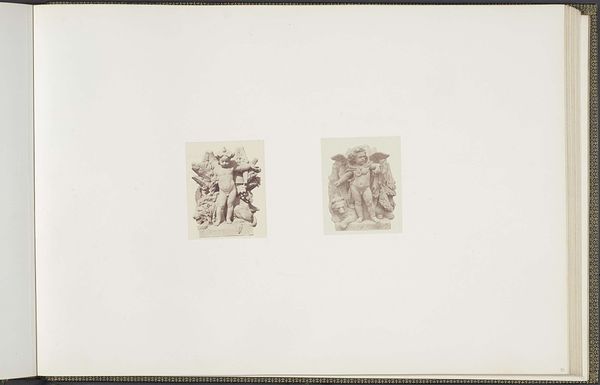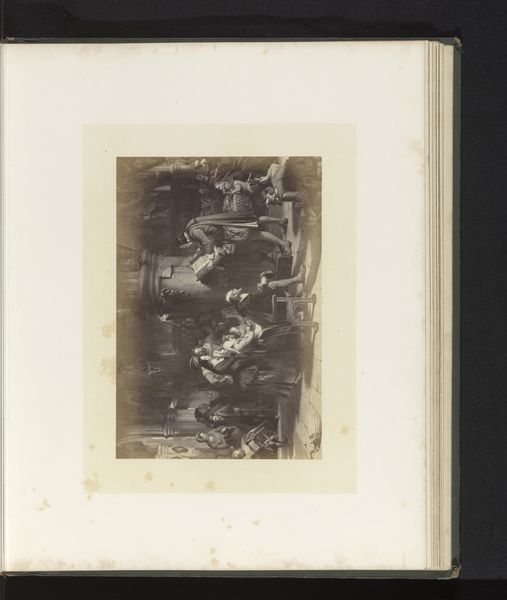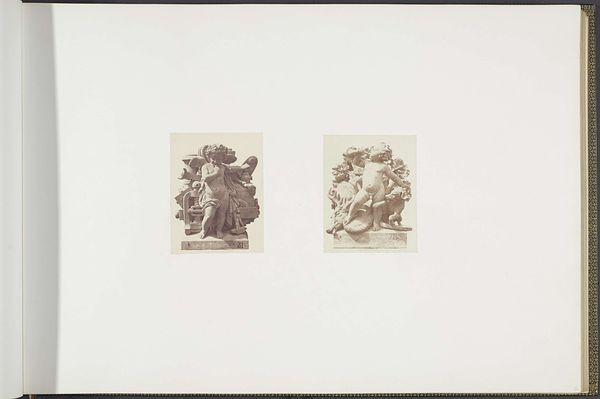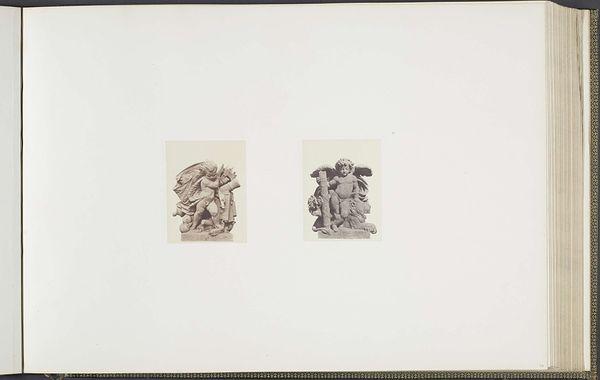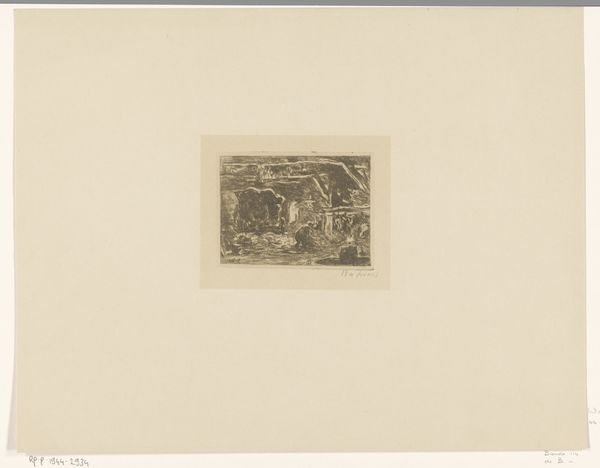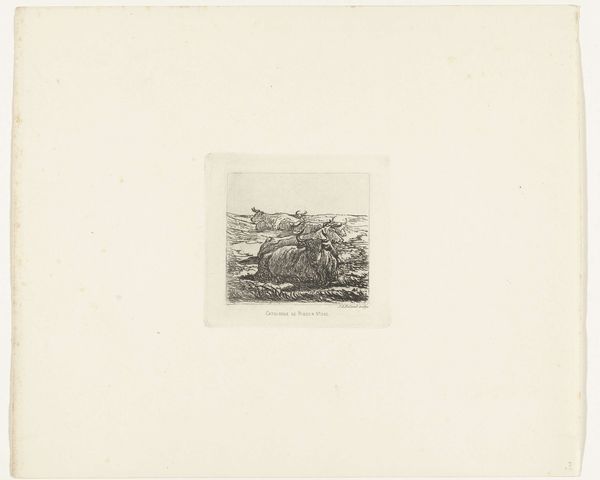
Gipsmodellen voor beeldhouwwerken op het Palais du Louvre: links "La Force" door Charles Auguste Lebourg en rechts "L'Automne" door Emile Chatrousse c. 1855 - 1857
0:00
0:00
edouardbaldus
Rijksmuseum
photography, sculpture
#
portrait
#
neoclacissism
#
figuration
#
photography
#
sculpture
Dimensions: height 382 mm, width 560 mm
Copyright: Rijks Museum: Open Domain
Edouard Baldus captured these plaster models for sculptures at the Palais du Louvre in this photograph. On the left, ‘La Force,’ likely depicts the classical virtue of strength, signified by the robust figure of a putto, a symbol of youthful vigor, alongside symbols of war and power. To the right, ‘L’Automne’ shows a putto surrounded by grapes and foliage, hallmarks of autumn's bounty. The motif of the putto, derived from ancient Greco-Roman art, experienced a significant revival during the Renaissance. These cherubic figures, once associated with pagan deities, were Christianized, appearing in religious and secular contexts alike. Consider the image of Cupid, a putto armed with arrows, a symbol of love, which echoes through time, transforming into the playful angels found in Renaissance paintings. These figures speak to our collective memory, triggering deeply rooted associations with innocence, vitality, and the changing seasons. The image of the putto, a symbol endlessly reborn, embodies the cyclical nature of cultural memory, reminding us of the past’s persistent presence in the present.
Comments
No comments
Be the first to comment and join the conversation on the ultimate creative platform.
